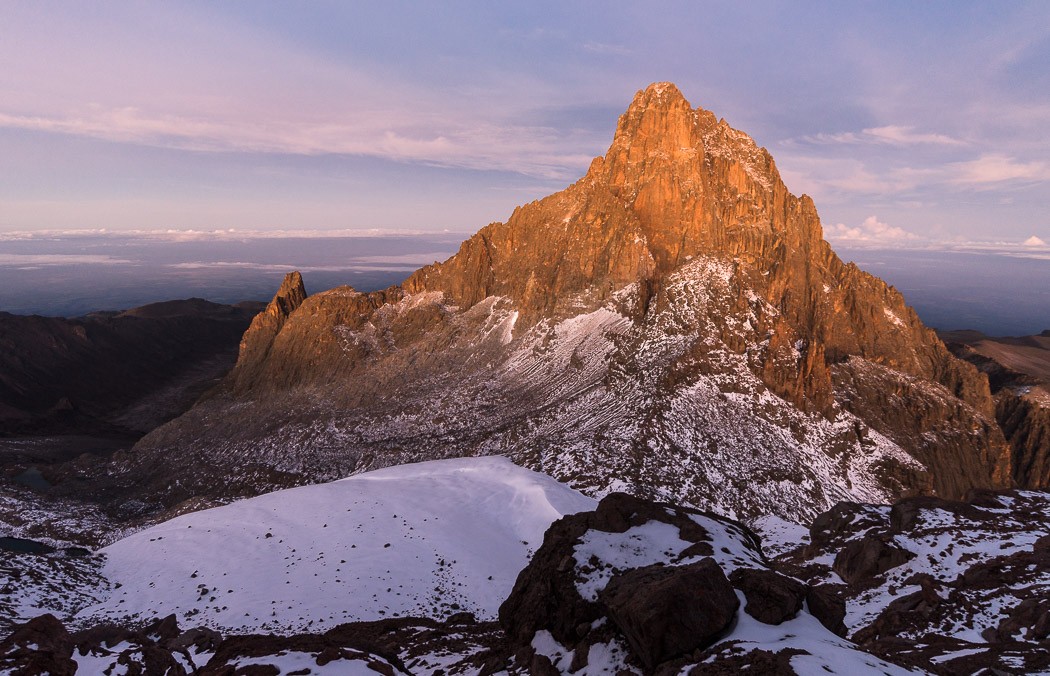Why are Mount Kenya So Prominent?
Unveiling Nature's Majesty: The Intriguing Prominence of Mount Kenya
Mount Kenya

Mount Kenya stands as a towering testament to the awe-inspiring forces of nature, captivating the hearts and minds of explorers, scientists, and adventurers alike. As an extinct volcano and the second-highest peak in Africa, its prominence in both physical stature and cultural significance is undeniable. In this comprehensive exploration, we delve into the myriad factors that contribute to Mount Kenya’s prominence, from its geological origins to its ecological diversity and cultural heritage.
Geological Origins: The Birth of a Giant
Mount Kenya’s journey to prominence began millions of years ago with the tumultuous forces of tectonic activity and volcanic eruptions. Born from the fires of the Earth’s mantle, Mt Kenya emerged as an imposing stratovolcano, its peaks reaching towards the heavens with majestic determination.
The geological processes that shaped Mount Kenya are rooted in the complex dynamics of the East African Rift System, a vast network of tectonic fractures and rift valleys that traverse the continent. Over time, successive eruptions and volcanic activity sculpted the landscape, giving rise to the iconic peaks of Batian, Nelion, and Point Lenana that define Mt Kenya’s silhouette today.
Elevation and Altitude: Reaching for the Sky
One of the most striking features of Mount Kenya is its impressive elevation, with its highest peaks soaring to dizzying heights above sea level. Batian, the tallest summit, stands proudly at 5,199 meters (17,057 feet), followed closely by Nelion and Point Lenana.
The sheer altitude of Mt Kenya contributes to its prominence, drawing the gaze of admirers from miles around and challenging intrepid climbers to test their mettle against its rocky slopes and icy crags. As one ascends the mountain, the air thins, the temperature drops, and the world below fades into insignificance, offering a profound sense of perspective and humility in the face of nature’s grandeur.
Ecological Diversity: A Tapestry of Life
Beyond its towering peaks and rugged terrain, Mount Kenya harbors a rich tapestry of ecological diversity, from lush montane forests to alpine meadows and glaciers. This remarkable range of habitats supports a myriad of plant and animal species, many of which are found nowhere else on Earth.
Mount Kenya’s forests teem with life, hosting a diverse array of flora and fauna adapted to the cool, moist conditions of the highlands. Giant lobelias, towering bamboo, and ancient cedar trees cloak the slopes, providing shelter and sustenance for monkeys, birds, and elusive forest dwellers.
As one ascends higher, the landscape transforms into open moorlands and rocky outcrops, home to hardy species adapted to the harsh alpine environment. Here, alpine flowers bloom in a riot of color, while giant groundsels and bizarre-looking lobelias cling tenaciously to the rocky slopes.
Cultural Heritage: A Sacred Mountain
Mount Kenya holds profound cultural significance for the indigenous communities that call its slopes home. For centuries, the Kikuyu, Embu, and Meru peoples have revered the mountain as a sacred site and a source of spiritual inspiration. Just as we know Why are Verkhoyansk Mountains So Prominent?
According to traditional beliefs, Mount Kenya is the abode of Ngai, the Supreme Creator in Kikuyu mythology. Its peaks are imbued with divine power, serving as a conduit between the earthly realm and the realm of the gods. Rituals and ceremonies conducted on the mountain are believed to invoke blessings and ensure the well-being of the community.
Conservation and Tourism: Balancing Preservation and Access
As Mount Kenya’s prominence has grown in the eyes of the world, so too have the challenges of preserving its fragile ecosystems and cultural heritage. The mountain faces threats from deforestation, poaching, and unsustainable tourism practices, putting its unique biodiversity and cultural significance at risk.
Efforts to conserve Mt Kenya’s natural and cultural heritage are ongoing, with initiatives focused on habitat restoration, wildlife protection, and community-based tourism development. Sustainable tourism practices aim to strike a balance between promoting responsible visitation and safeguarding the mountain’s delicate ecosystems for future generations to enjoy.
Conclusion: A Beacon of Natural Splendor
In conclusion, Mount Kenya’s prominence is a testament to the extraordinary forces of nature and the enduring spirit of exploration and discovery. From its geological origins to its ecological diversity and cultural significance, the mountain stands as a beacon of natural splendor, inspiring wonder and reverence in all who behold it.
As we continue to unravel the mysteries of Mount Kenya and explore its hidden depths, let us do so with a spirit of humility and respect for the land and its people. By embracing the majesty of Mt Kenya and working together to protect its precious resources, we ensure that this iconic landmark will continue to inspire and uplift us for generations to come.
Know More about Mount Kenya.
What Are The Tourist Places Nearest to Mount Kenya?
When Were Mount Kenya Formed?
Where Are Mount Kenya Located?
Who Discovered Mount Kenya?
How to Reach Mount Kenya?




